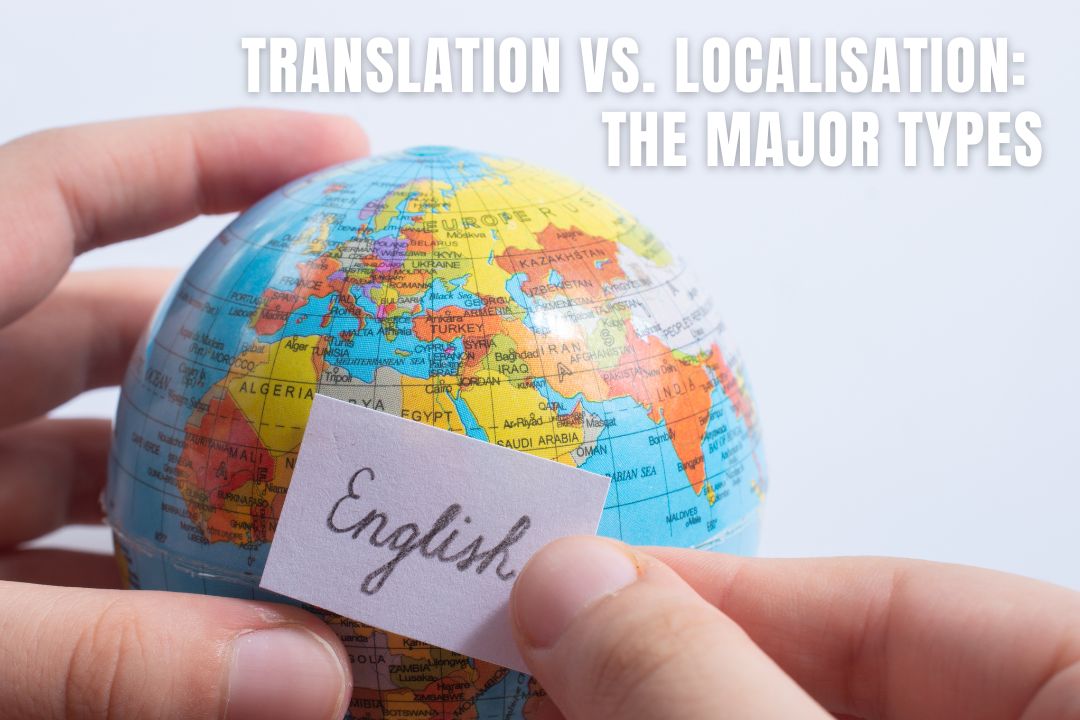
Before tapping into any foreign market, you must understand whether you need translation or localisation services. To make your life easy, we’re going to define each phenomenon here, along with its types. Once you know the difference between the two and their types, you will be able to make a wise decision about your global business expansion.
So, let’s get started.
We can define translation: as a process that transfers written material from one language to another. In a way that transfers the true meaning of the original or source text to its equivalent in the intended language. All this is done while keeping many constraints into account, such as grammar, syntax, idioms, the semantics of both languages, and more.
If you try to understand this translation phenomenon, you will come across many of its types based on content type, translation method, and the translation agencies or freelancers you choose to work with. However, we’ll try to touch upon the most popular ones in this blog.
According to experts, literature translation services are the most difficult of all. Why? |They involve poetry, prose, comics, novels, plays, and so on. A translator is not just required to get the meaning right, as well as the context, sound, tone, feelings embedded in the words, and cultural differences. Two translators would often be competing in their efforts to best translate an author. This competition is known as the “translation slam”.
As the name suggests, it involves the translation of documents that are technical in nature. However, there can’t be a unique or singular definition of it. Because the definition varies as per the disciplines and industry verticals under consideration.
One thing we can say is that the documents in this translation are mostly related to the production process. Such as instruction manuals, engineering documents, user guides, etc.
But this is also a fact that documents involved in medical manufacturing will be different from those involved in software development projects. Since their types vary according to domains, the translator must possess expertise according to each field.
This type is all about translating technical content such as engineering documents, user guides, and instruction manuals.
Legal translation includes a wide range of legal documents and texts, making it quite complex for translators. In order to produce flawless wording, medical translators have to have an additional degree in this field. Otherwise, they might not be able to understand the range of legal terminologies. Which will result in poor translations.
Many experts further divide this translation type into three sections. They categorise legal documents such as summons, warrants, guarantees, and administrative texts into one type. The second type of legal translation deals with judicial documents like judgments and depositions, etc. Then there is a translation that’s related to juridical documents, which involves documents like labour contracts, partnership agreements, etc.
Financial translation is also known as economic translation. It refers to documents that are related to banking and finance. Some of its examples are corporate reports, financial packages, contracts, and financial statements of companies. This also includes bank statement translation, which involves converting a financial document that provides a summary of a bank account's transactions and balances from one language to another.
This is similar to technical translation, the one we discussed above. Some would say that it’s a subset of technical translation. For instance, in a specific field like medicine, you would need an accurate translation of medical terms. Nevertheless, the documents involved in this field are only scientific. This includes but is not limited to theses, research papers, articles, clinical study reports, and presentations.
In localisation, you adapt your product, content, or service to fit a specific market or location. This makes it necessary that your content should adapt to their cultural particularities, language, etc. while being easy to understand. Otherwise, the local speakers of that area may not use your business or service offerings comfortably. After all, your aim is to engage those foreign potential customers and make things interesting for them. Therefore, when you localise your content, you should do so in such a way that you appear to be speaking as one of them.
Website localisation entails the transfer of all the website content from one language to the target language(s). It covers not only static text but also visuals, PDFs, and videos. When customers visit your website, it should seem natural to them, despite all the language and cultural barriers.
Multimedia localisation is the process of customising your audio or video files to meet the needs of native speakers in another foreign market. It applies to various multimedia projects like training videos, audio recordings, presentation movies, corporate films, web banners, interactive animation, product presentations, and more.
Software localisation is one of the most famous types of localisation that generally applies to apps and video game projects. The purpose here is to localise all components of the game or app that a user sees.
This involves localisation of all the product information like the content and the manuals. Studies show that if a product is not localised as per the target market, users tend not to buy it. So your goal should be to present your product information in an easy and comprehensible way to your users.
That concludes our blog. We tried to explain what the terms translation and localisation actually mean. And what their major types are. Once you know each phenomenon, you will be better able to hire the services you need for your global expansion.
Related Articles: